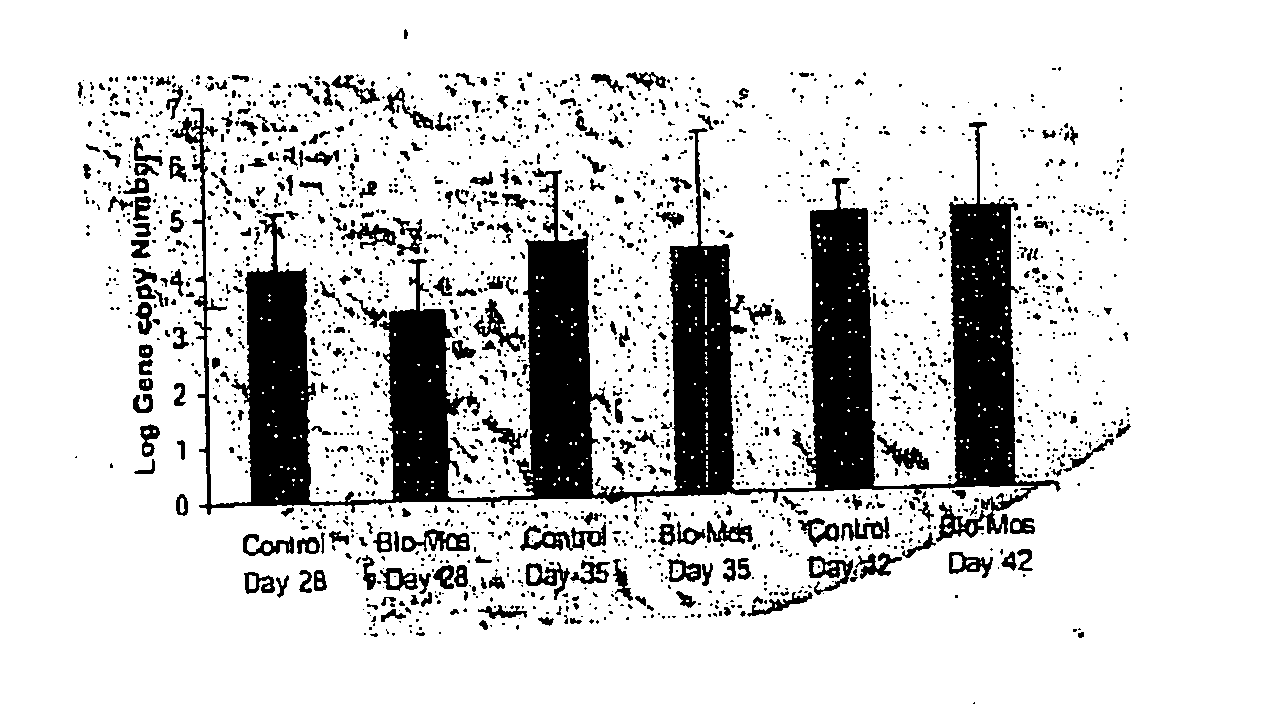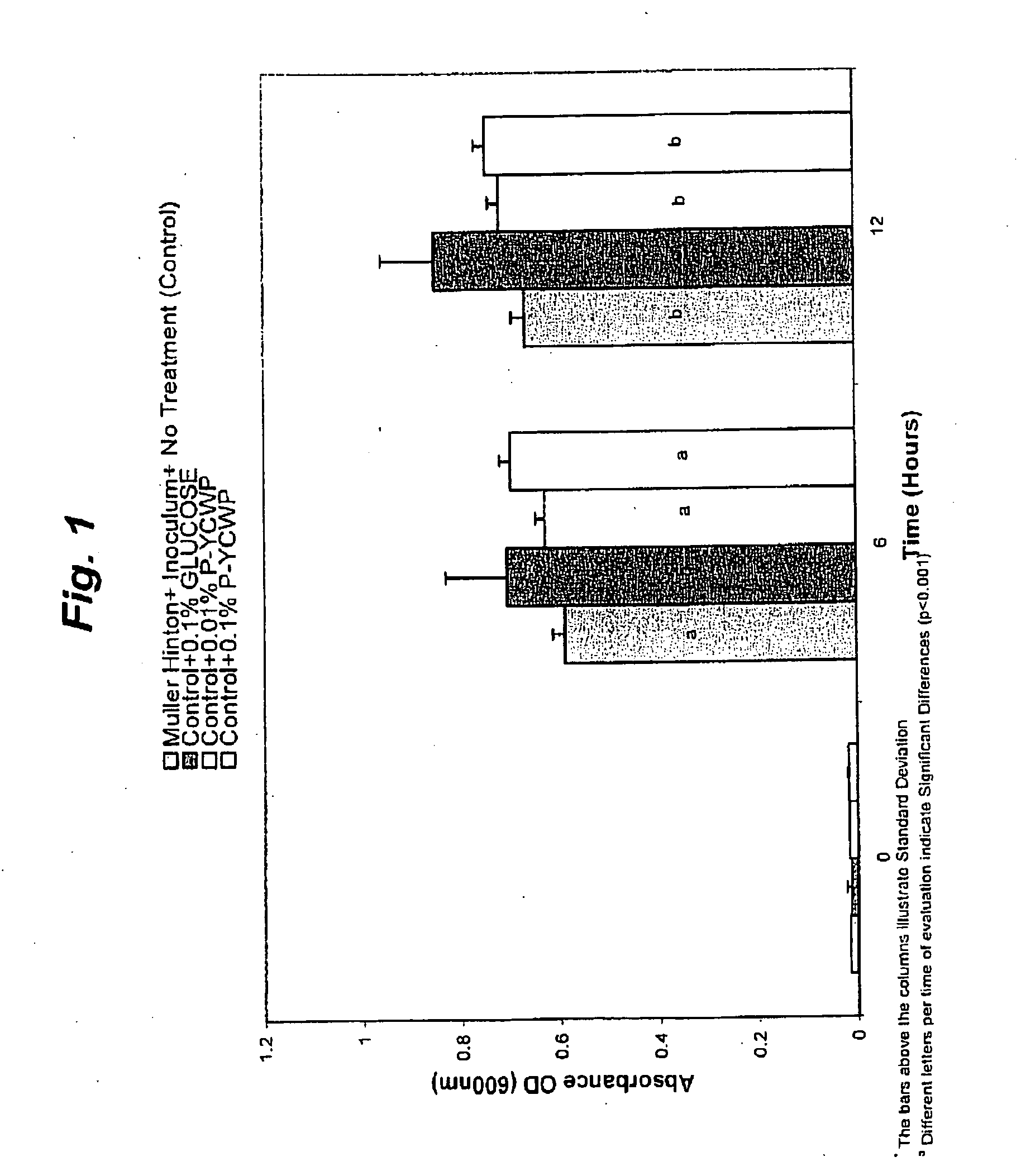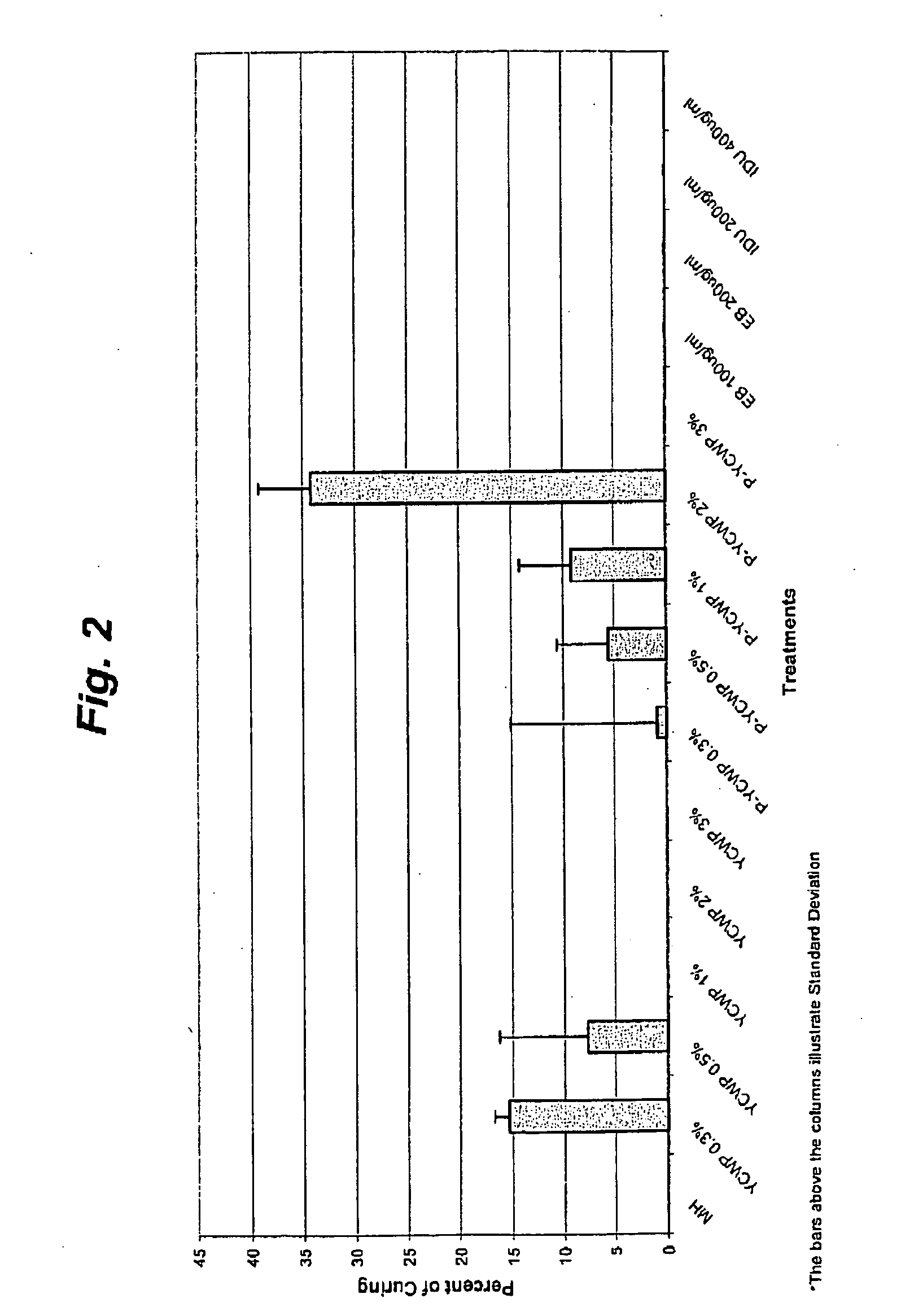Reduction of antibiotic resistance in bacteria
a technology of antibiotic resistance and bacteria, applied in the direction of antibacterial agents, biocide, plant/algae/fungi/lichens ingredients, etc., can solve the problems of loss of antibiotic resistance by the bacterial cell, and achieve the effect of reducing or eliminating antibiotic resistance in bacteria, reducing or eliminating antibiotic resistance of the bacteria, and reducing or eliminating the presence of a bacterial plasmid
- Summary
- Abstract
- Description
- Claims
- Application Information
AI Technical Summary
Benefits of technology
Problems solved by technology
Method used
Image
Examples
example 1
[0055]Neither P-YCWP nor YCWP had any effect on growth of E. coli or Salmonella spp. Representative results are provided in FIG. 1. A small but significant effect of YCWP (0.1%) was seen at 6 hr of incubation of the Salmonella spp, but had disappeared by 12 hr (data not shown).
[0056]Based on preliminary Kirby Bauer sensitivity test evaluation, the E. coli of swine origin used in the present evaluation demonstrated general multi-drug resistant patterns including 12.8% resistant to 4-5 antibiotics, 15% resistant to 6 antibiotics, and 71% resistant to 7 or more antibiotics. The Salmonella spp. tested showed that 38% were resistant to 4 or fewer antibiotics, and 62% were resistant to more than 4 antibiotics (see Tables 1 and 2).
[0057]Following exposure to YWCP, in general YWCP concentrations of 0.3-1.0% demonstrated a beneficial effect on E. coli antibiotic resistance patterns. Specifically, increased sensitivity of E. coli to ampicillin, chloramphenicol, streptomycin, and neomycin was ...
example 2
[0061]To determine whether the yeast cell wall preparations were deactivating antibiotic via an adsorption mechanism, two groups of Salmonella isolates were treated with P-YCWPs with or without selected antibiotics. The first isolate group was streptomycin-resistant and ampicillin-sensitive. With reference to FIG. 7, growth in the presence of streptomycin (1000 μg / ml) demonstrated a decrease in absorbance compared to antibiotic-free controls. Growth in the presence of ampicillin (32 μg / ml) did not affect growth rate compared to controls. Including 0.3 and 0.5% P-YCWP did not alter sensitivity patterns in the presence of streptomycin, but isolates did not grow. Had antibiotic been adsorbed by P-YCWP, the isolates would have grown as in the absence of antibiotic and P-YCWP.
[0062]The second group of Salmonella isolates were ampicillin-resistant and streptomycin-sensitive. Results showed no growth in the presence of streptomycin, but growth in the presence of ampicillin (FIG. 8). Inclus...
example 3
[0064]The majority of E. coli and Salmonella spp. evaluated agglutinated either P-YCWP or YCWP (Table 5).
TABLE 5The effect of glucose, fructose and mannose on the ability ofE. coli and Salmonella spp. to agglutinate with YCWP or P-YCWP.GlucoseFructcoseMannosePBS + Bacteria +Isolates100 mM100 mM100 mMP-YCWP / YCWPSalmonella spp. (13)Positive (+)Negative (−)Negative (−)Positive + / +S. Cholerasuis (2)Negative (−)Negative (−)Negative (−)Negative − / −S. pullorum (1)Negative (−)Negative (−)Negative (−)Negative − / −E. coli (30)Positive (+)Negative (−)Negative (−)Positive + / +P-YCWP / YCWP (0.1%) + plain PBS is a negative control (no agglutination)P-YCWP / YCWP + PBS with bacteria (If bacteria adhere to it, there will be agglutination)
[0065]Thus, the above results show that the yeast cell wall preparations of the present invention provide an alternative method for curing antibiotic resistant enterobacteria. No effect on bacterial growth was observed, possibly because the evaluated isolates lack the n...
PUM
| Property | Measurement | Unit |
|---|---|---|
| antibiotic resistance | aaaaa | aaaaa |
| resistance | aaaaa | aaaaa |
| Bacterial antibiotic resistance | aaaaa | aaaaa |
Abstract
Description
Claims
Application Information
 Login to View More
Login to View More - R&D
- Intellectual Property
- Life Sciences
- Materials
- Tech Scout
- Unparalleled Data Quality
- Higher Quality Content
- 60% Fewer Hallucinations
Browse by: Latest US Patents, China's latest patents, Technical Efficacy Thesaurus, Application Domain, Technology Topic, Popular Technical Reports.
© 2025 PatSnap. All rights reserved.Legal|Privacy policy|Modern Slavery Act Transparency Statement|Sitemap|About US| Contact US: help@patsnap.com



